Course Reviews
Discover the Underrated Golf Courses of Eastern Europe
Explore 33,000+ golf courses in 180 countries.
Follow the latest news and trends in golf.
Connect with like-minded golfers.
Find everything you need for your golf equipment and gear needs.
Travel, golf resorts, lifestyle, gear, tour highlights and technology.
All Square
Suggestions
Course Reviews
Discover the Underrated Golf Courses of Eastern Europe
Destinations
Top Bucket-List Events Every Golfer Should Attend
Course Reviews
Riviera Fairways: Glamour Golf in the South of France
All Square
Golf & Gastronomy: Pairing Michelin Stars with Perfect Swings
Abu Dhabi HSBC Championship
Aaron Rai’s Winning WITB at Abu Dhabi HSBC Championship
Clubs
Inside Ben Griffin’s Winning Bag at the 2025 WWT Championship
Clubs
The Most Popular Driver Shafts on the Market?
Destinations
Explore Adare Manor — 2027 Ryder Cup Destination
Course Reviews
The Best 36-Hole Golf Resorts Around the World
Course Reviews
The Best Golf Courses Near Pinehurst That Aren’t Pinehurst No. 2
DP World Tour
The Top 10 Greatest Upsets in Golf Tournament History
DP World Tour
Who Is the Best Driver of the Golf Ball So Far in 2025?
Course Reviews
Kytäjä Golf & Uni Villa: Finland’s Lakeside Golf Retreat
Course Reviews
Golf Trip to Oman
DP World Tour
The Top European Golfers of All Time
Clubs
Michael Brennan’s Breakthrough Victory at the Bank of Utah Championship
Clubs
Who Is the Best Wedge Player on Tour So Far This Season?
Clubs
The Best Drivers and Fairway Woods on the Market
Course Reviews
Terras da Comporta: Portugal’s New Golf Destination
Course Reviews
The New Wave of Short Courses
Course Reviews
The Els Club Vilamoura: Golfing Grandeur in the Algarve
Clubs
Cameron Young’s Winning WITB – 2025 Wyndham
Course Reviews
A Golf Odyssey Along the Basque Coast: Biarritz & San Sebastián
Amateur Golf
All Paths to a PGA Tour Card
Amateur Golf
Unveiling the Best Celebrity Golfers
Destinations
What to Know About the 2025 Ryder Cup at Bethpage Black
Clubs
Aldrich Potgieter’s Breakthrough Win at the 2025 Rocket Classic
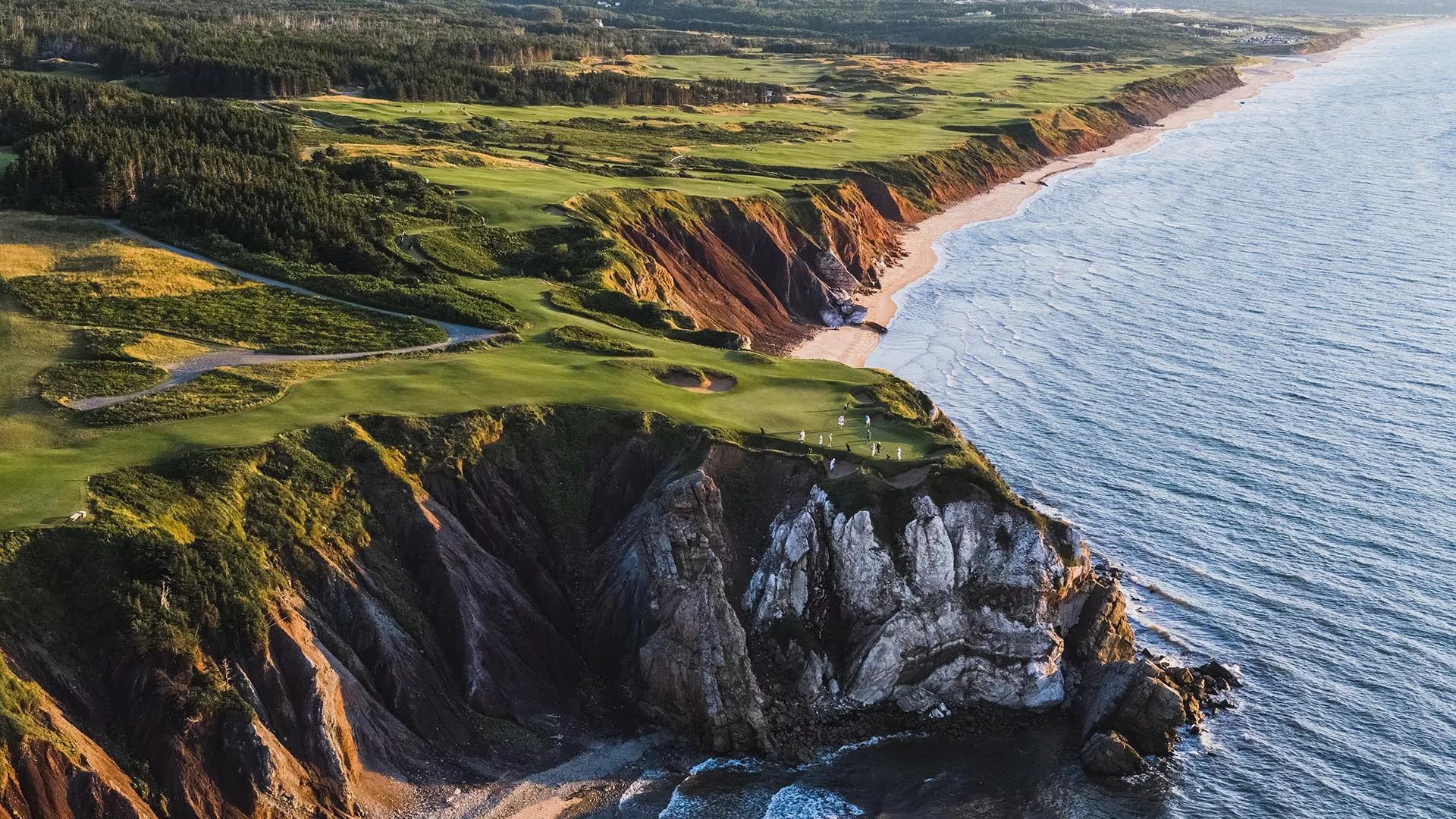
Perched high above the Gulf of St. Lawrence on Cape Breton Island, Cabot Cliffs has redefined what it means to play golf in Canada. Designed by the acclaimed duo of Bill Coore and Ben Crenshaw and unveiled in 2015, the course has quickly risen to international acclaim, celebrated for its dramatic cliff-top holes, sweeping ocean vistas, and ingenious layout that feels both daring and natural. Yet Cabot Cliffs is more than a golf destination — it is the centerpiece of a regional revival, drawing travellers to a corner of Nova Scotia where rugged coastline, Celtic traditions, and the famed Cabot Trail create an atmosphere unlike anywhere else in the golfing world.

Cabot Cliffs is part of the Cabot Cape Breton resort complex, which also includes Cabot Links, The Nest, villas, hotel accommodations, restaurants, and real estate. The course was designed by Bill Coore & Ben Crenshaw, two names that carry enormous weight in the world of golf course architecture. When it opened in 2015, it immediately drew attention for its bold routing and breathtaking visuals. While Cabot Links (opened in 2011) is often described as a “true links” course, Cabot Cliffs builds on that tradition while bringing additional variety — woodland, bluff edges, wetland, meadow — all set above the rugged Atlantic coast.
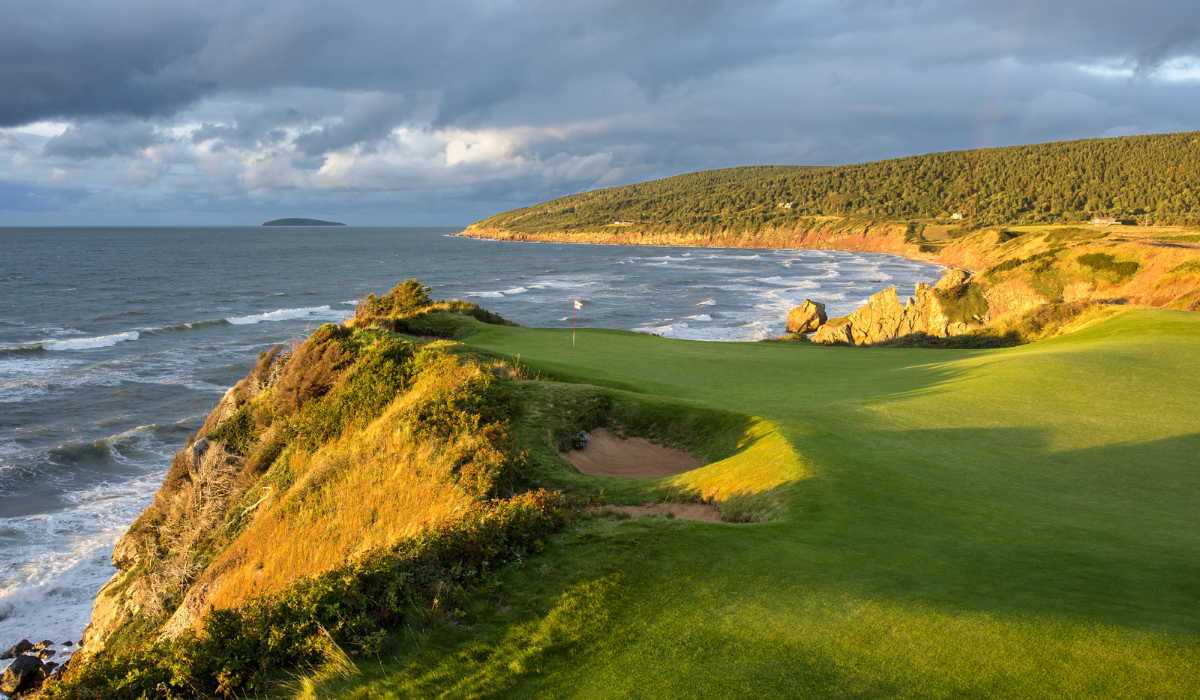
Every hole at Cabot Cliffs offers something visually striking. From dramatic tee shots off cliffs to stretches where fairways contour through forested or meadowland, the terrain changes in ways that keep both body and mind engaged. The course is a par-72, roughly 6,700 to 6,800 yards from the back tees (depending on which markers are used), with a high slope and rating, meaning it’s no walk in the park.
One of the signature pleasures — and challenges — is how the views take you out to the Gulf of St. Lawrence, especially from the bluff edges. Holes that flirt with ocean exposure are balanced by holes tucked closer to woodland or wetland, so wind, light, and terrain constantly change the experience. A noteworthy design peculiarity: each nine holes on Cliffs has three par-3s, three par-4s, and three par-5s. That kind of symmetry creates a sense of balance in the rhythm of the round.
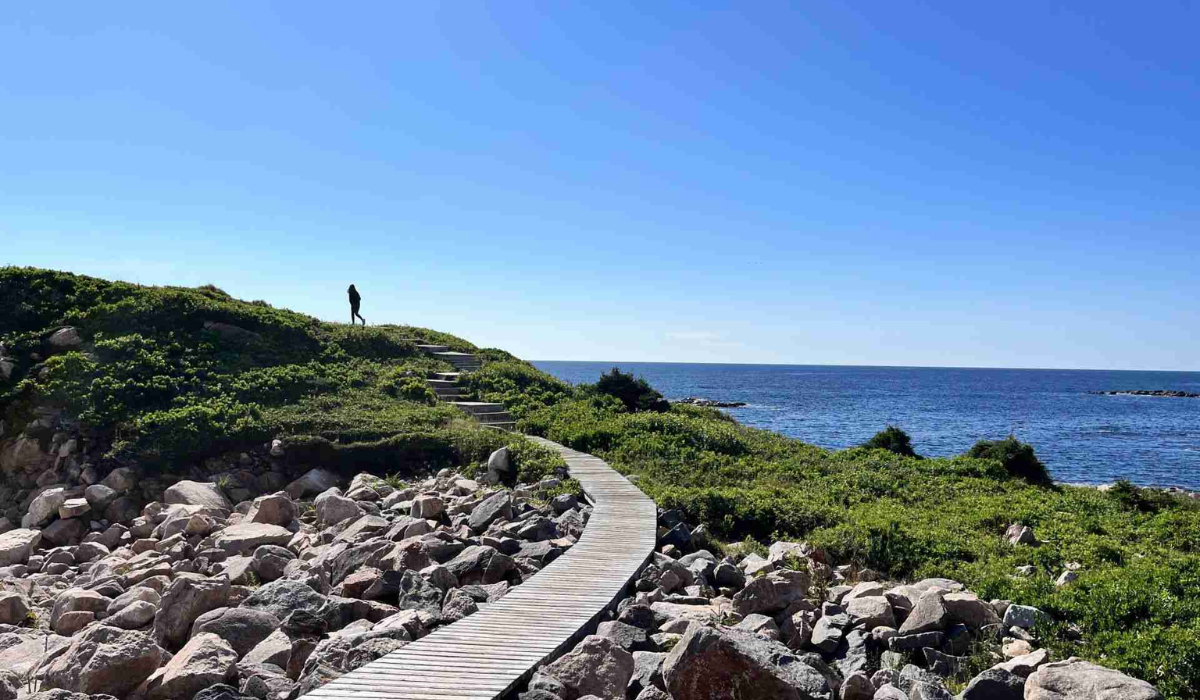
Nestled in Inverness, on the western side of Cape Breton Island, Cabot Cliffs is firmly part of a place with deep natural, cultural, and historical richness. The land here is rugged and coastal, tied to the sea, shaped by geological forces, weather, and generations of human presence.
Cape Breton Island itself is famous for its highland plateaus, the Bras d’Or Lake, a strong Celtic (Scottish Gaelic) culture, Acadian communities, and a musical tradition that in many ways still pulses in the air, especially in smaller communities.

One of the draws is the Cabot Trail, the world-renowned scenic drive. It curves along cliffs, through highland clearings, offers vistas over the ocean, and gives visitors a sense of scale and wildness that pairs so well with golf here.
Weather, too, is part of the character. Salt air, ocean winds, shifting light — morning mist or afternoon sun over the Gulf — these are more than “nice touches”; they alter how the course plays and how one experiences each hole. Spring and fall especially bring variable conditions that reward adaptability and heighten mood.
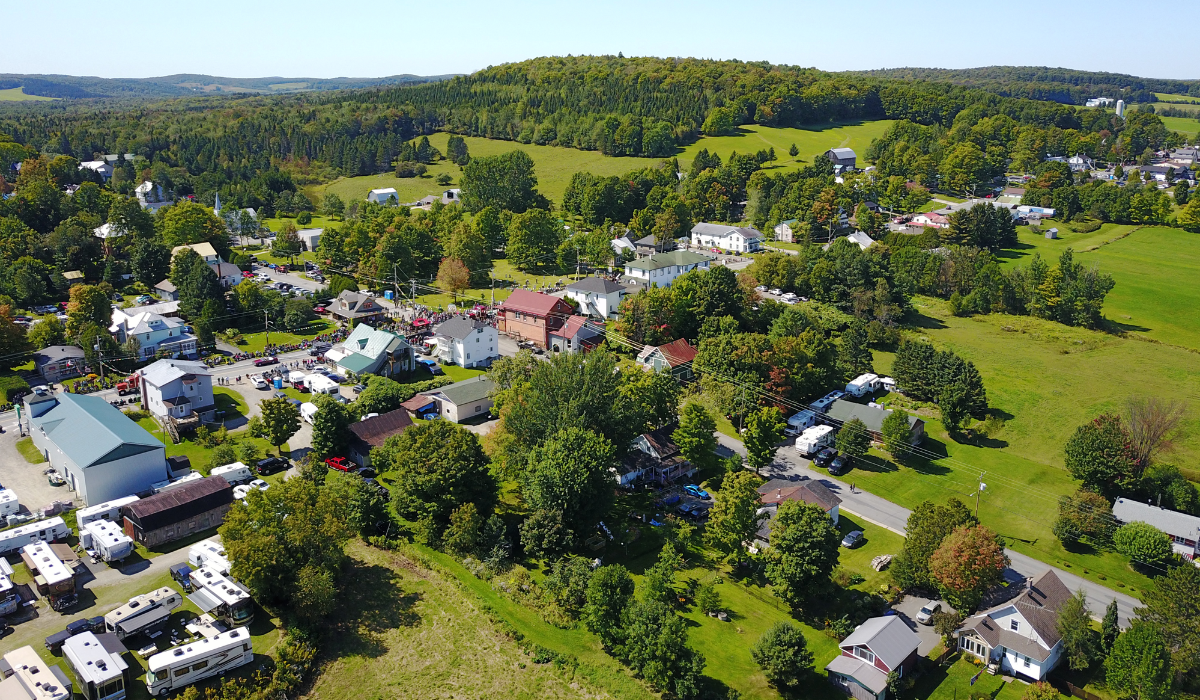
Before Cabot Links and especially before Cabot Cliffs opened, Inverness and the surrounding region were facing economic challenges, especially since the closure of coal mines and decline in some traditional rural industries.
The development of these courses has played an important role in revitalising the area — not just by bringing golfers, but by supporting lodging, restaurants, real estate, and related service industries. Cabot also offers real estate (villas, cottages, homes) plus amenities, which spreads the economic benefit beyond seasonal play.

Tourism marketing for Nova Scotia now regularly points to Cape Breton, the Cabot Trail, and Cabot Cliffs / Cabot Links as crown jewels, helping draw both domestic visitors and international golf travellers.
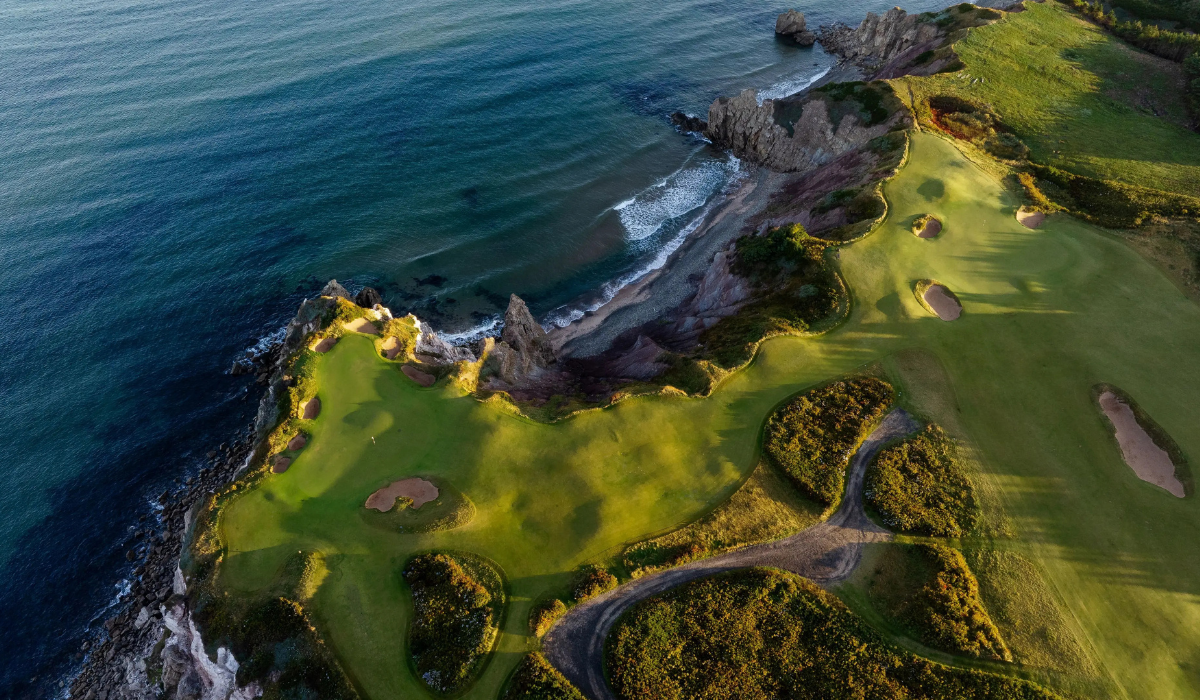
Cabot Cliffs is more than a beautiful golf course — it’s a symbol of what thoughtful design, respect for land, and investment can do for rural places. It shows how sport, nature, and culture can intertwine: golfers don’t just come for the 18 holes, but to drink in the Atlantic horizon, feel the wind off the Gulf, wander through a highland clearing, hear music in a nearby village, and leave with memories not just of shots made or missed, but of place.